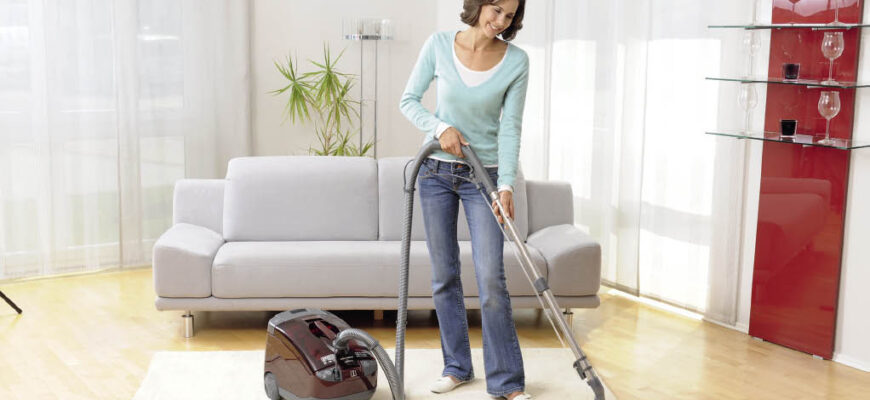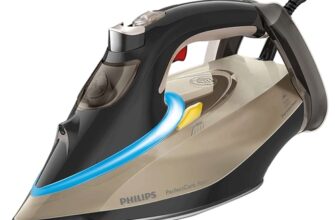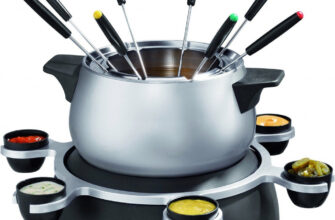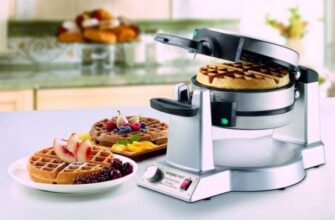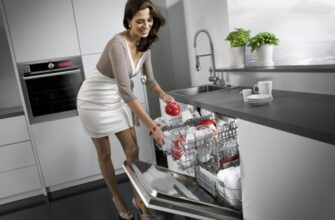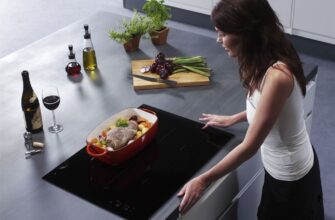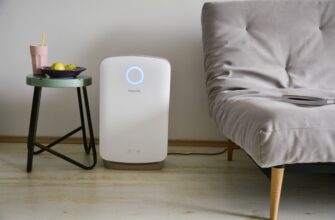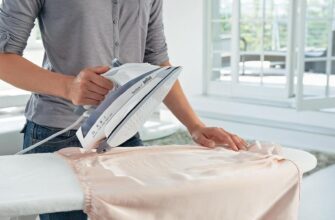When choosing a vacuum cleaner, you should first of all pay attention to its performance characteristics, especially based on the planned use.

!
We recommend reading an article from an expert on choosing the best robot vacuum cleaner for your apartment and house.
- How to choose a vacuum cleaner for your home and apartment: what to look for
- Types of vacuum cleaners
- Conventional vacuum cleaners
- Advantages
- disadvantages
- !
- Vertical vacuum cleaners
- Advantages
- disadvantages
- Hand vacuum cleaners
- Advantages
- disadvantages
- '2 in 1' – handheld vacuum cleaners with vertical functionality
- Advantages
- disadvantages
- Robot vacuum cleaners
- Advantages
- disadvantages
- Vacuum cleaners for dry cleaning
- Advantages
- disadvantages
- Vacuum cleaners for wet cleaning
- Advantages
- disadvantages
- Vacuum cleaners for wet and dry cleaning
- Advantages
- disadvantages
- Steam vacuum cleaners
- Advantages
- disadvantages
- Which vacuum cleaner to choose
- Vacuum cleaner selection parameters
- Dust collector type
- Bags
- Advantages
- disadvantages
- Containers
- Advantages
- disadvantages
- Vacuum cleaners with water filter
- Advantages
- disadvantages
- Filter types
- Power consumption and suction
- Equipment
- Storage features
- How much does a vacuum cleaner cost
- The best manufacturers of vacuum cleaners – which company to choose
How to choose a vacuum cleaner for your home and apartment: what to look for
When choosing a vacuum cleaner for your home, you should pay attention to its following parameters:
-
Suction power;
-
Dust collector type;
-
The presence of a wet cleaning mode;
-
Design and equipment.
-
The manufacturer of the device is also important.
Types of vacuum cleaners
Vacuum cleaners can be classified according to two criteria – design and type of cleaning. From a design point of view, they are divided into:
-
Regular;
-
Vertical;
-
Manual;
-
'2 in 1' (can be used both as vertical and as manual);
-
Robot vacuum cleaners.
By the type of cleaning, vacuum cleaners are divided into:
-
Supporting dry cleaning only;
-
Supporting only wet cleaning;
-
Supporting both dry and wet cleaning;
-
Steam.
Conventional vacuum cleaners
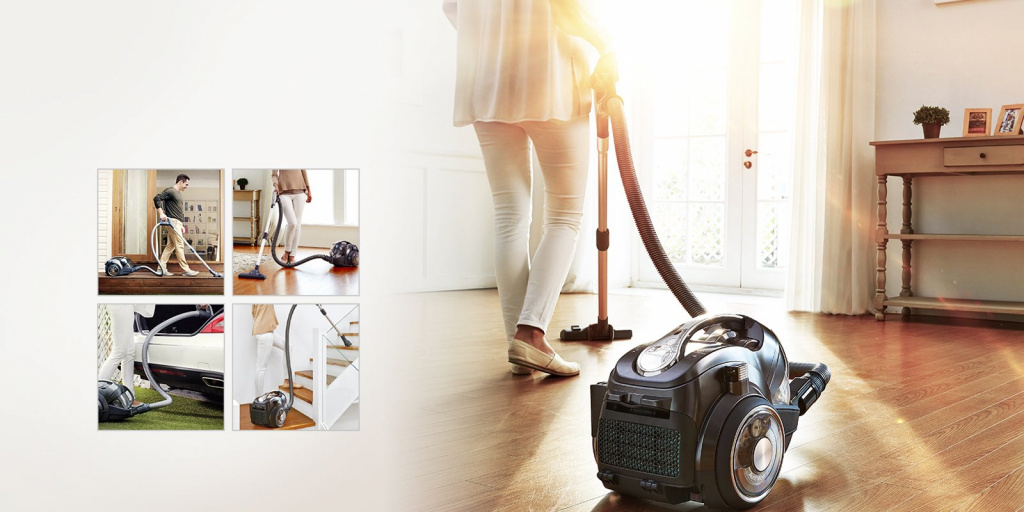
Conventional vacuum cleaners have a traditional design. The dust collector and the motor, which sucks in air together with dirt, are located in one unit, to which a brush is connected with a flexible hose.
Advantages
-
Usually low price and a huge number of models;
-
Minimum stress on the hands during cleaning;
-
The ability to clean in hard-to-reach places (for example, between pieces of furniture close to each other);
disadvantages
-
Low mobility of the main unit, which has to be dragged along;
-
Difficulty cleaning heavily furnished rooms;
-
Difficulty in storage;
!
Conventional vacuum cleaners are the easiest and most practical option if the budget for the purchase of the device is limited.
Vertical vacuum cleaners
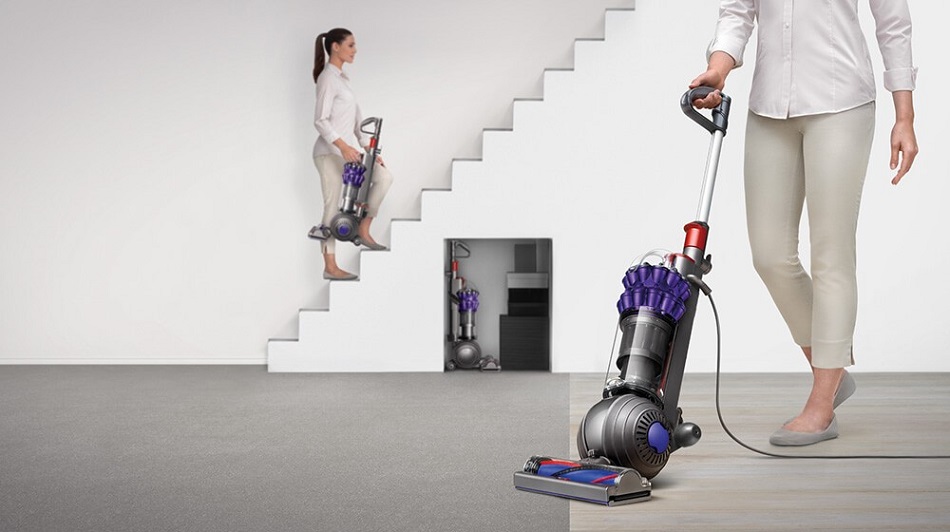
The design of vertical vacuum cleaners assumes that all the main elements – dust bag, brush and air suction drive – are on the same axis and within a single unit.
Advantages
-
Minimum power losses during suction;
-
Ease of storage;
-
Minimal risk of hose clogging;
disadvantages
-
High stress on hands, leading to fatigue during prolonged cleaning;
-
Upright vacuum cleaners are suitable for use in small apartments with few furniture;
-
The complexity of cleaning upholstered furniture;
-
The impossibility of removing dust from narrow crevices – for example, between furniture;
Hand vacuum cleaners

Handheld vacuum cleaners are extremely compact, so they are suitable for cleaning furniture and removing dust from various hard-to-reach places. But due to the low power and small volume of the dust collector, they are useless if you need to clean the floors in an entire apartment.
Advantages
-
Ease of cleaning upholstered and cabinet furniture;
-
The ability to clean in the car or just outside the house (for models with a battery);
-
Easy to clean hard-to-reach places for a conventional or handheld vacuum cleaner;
disadvantages
-
The small volume of the dust container, as a result of which it requires frequent cleaning.
-
Handheld vacuum cleaners are more of a supplementary device for cleaning 'top' surfaces.
'2 in 1' – handheld vacuum cleaners with vertical functionality
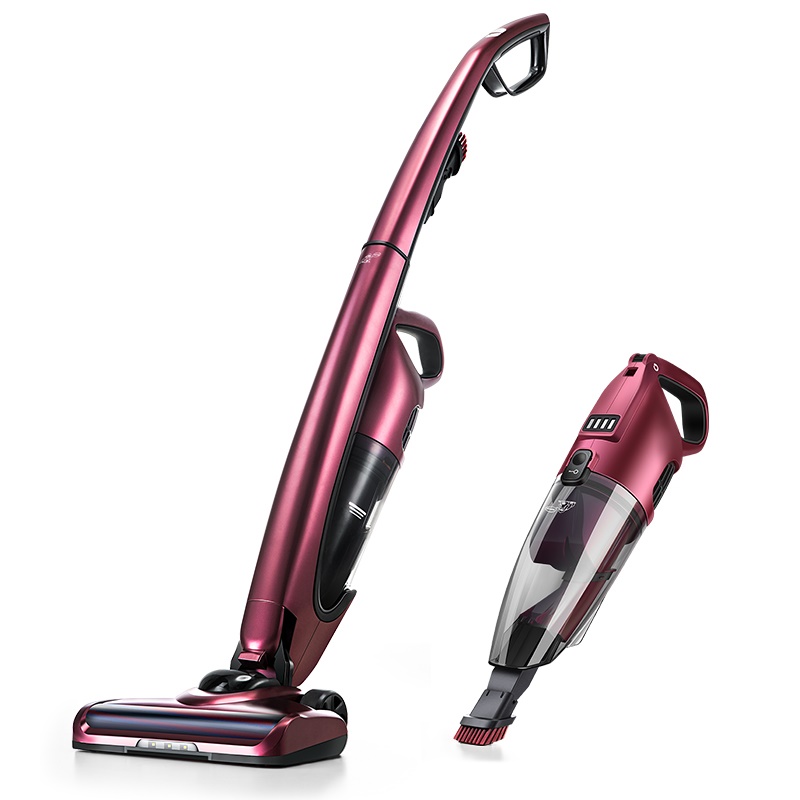
The '2-in-1' is essentially a conventional upright vacuum cleaner that only runs on battery power. This makes them especially mobile. However, in terms of dimensions, they correspond to conventional upright vacuum cleaners.
Advantages
-
Mobility;
-
Ease of storage;
-
Battery operation;
disadvantages
-
High stress on the arms, leading to fatigue;
-
The need to charge, the impossibility of cleaning with a discharged battery;
-
Usually a small amount of dust collector;
-
Inability to remove dust from narrow cracks;
Robot vacuum cleaners

Robot vacuum cleaners are structurally similar to conventional ones, but they clean without human intervention. Fully automatic, they drive around the apartment on their own and remove dirt from the floor.
Advantages
-
Fully automatic operation;
-
Virtually zero noise level;
-
Possibility of daily or even multiple cleaning per day;
disadvantages
-
Few models can clean debris in corners or in close proximity to furniture;
-
A robotic vacuum cleaner is a good device for everyday cleaning, but periodically you will have to vacuum and wash the floors yourself;
-
Configuration required;
-
Thresholds and other irregularities become insurmountable obstacles for the vacuum cleaner;
-
Remove dust only on the floor;
Vacuum cleaners for dry cleaning
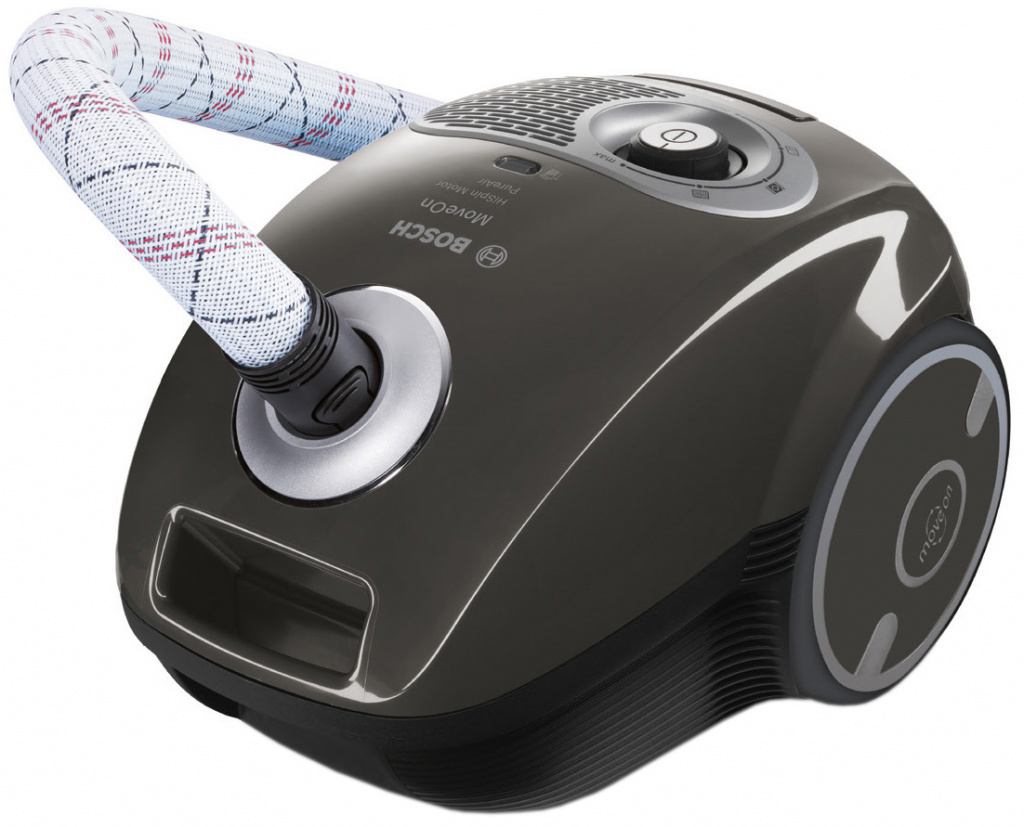
Dry vacuum cleaners are designed exclusively for removing dust from a variety of surfaces, including floor coverings.
Advantages
-
Low price (in most cases);
-
Easy to maintain;
-
Wide range of models;
disadvantages
-
To ensure maximum cleanliness, you will need to wash the floors after them;
-
Vacuum cleaners for dry cleaning are the most widely used and suitable for almost all users;
Vacuum cleaners for wet cleaning

Vacuum cleaners for important cleaning are equipped with a container for water, which, when used, is sprayed from the brush. Then the resulting dirt (a mixture of moisture and dust) is sucked into a container by a vacuum cleaner.
Advantages
-
Suitable for cleaning carpets, floor coverings and upholstered furniture;
-
Effectively removes various types of dirt, not just dust.
disadvantages
-
Requires the use of special filtered water;
-
Differ in high cost;
-
They are distinguished by their large dimensions;
-
Not all the water is sucked in, as a result of which carpets and furniture remain wet for some time;
It should be noted that vacuum cleaners designed exclusively for wet cleaning are rare and focused on the professional segment.
Vacuum cleaners for wet and dry cleaning
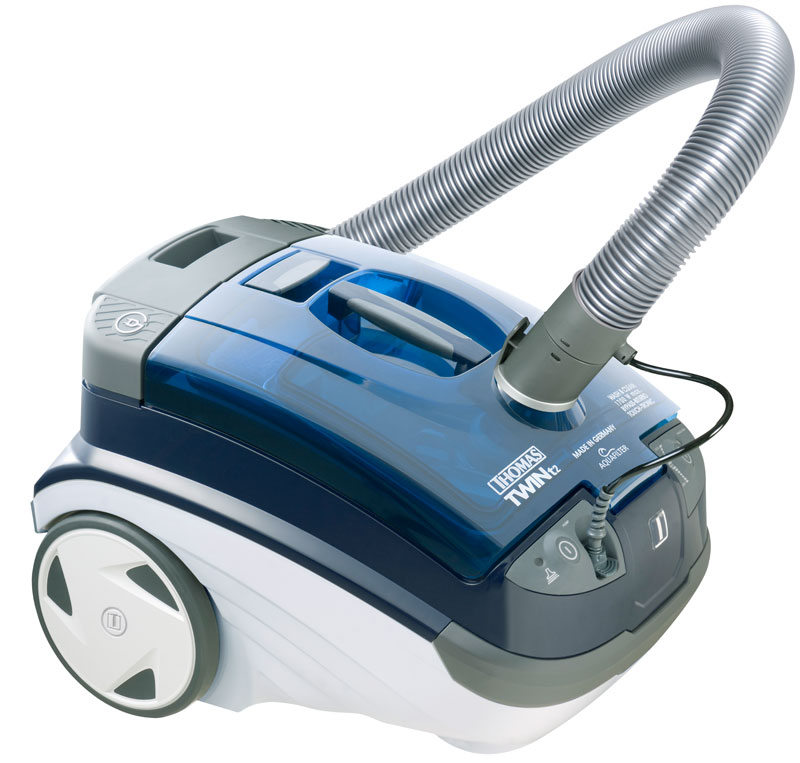
Household vacuum cleaners are similar to professional ones, and therefore have the same advantages and disadvantages. In addition, they can work in dry cleaning mode.
Advantages
-
They can work in dry cleaning mode;
-
Effective in cleaning;
-
Suitable for cleaning carpets and furniture;
-
They differ in compact size (slightly larger than usual);
disadvantages
-
Requires the use of purified water;
-
Are more expensive than usual;
-
Not all the water is sucked in;
-
They have a small volume of water containers, so you have to constantly top up it;
Vacuum cleaners for wet and dry cleaning are an excellent solution for everyday care of a small apartment.
Steam vacuum cleaners
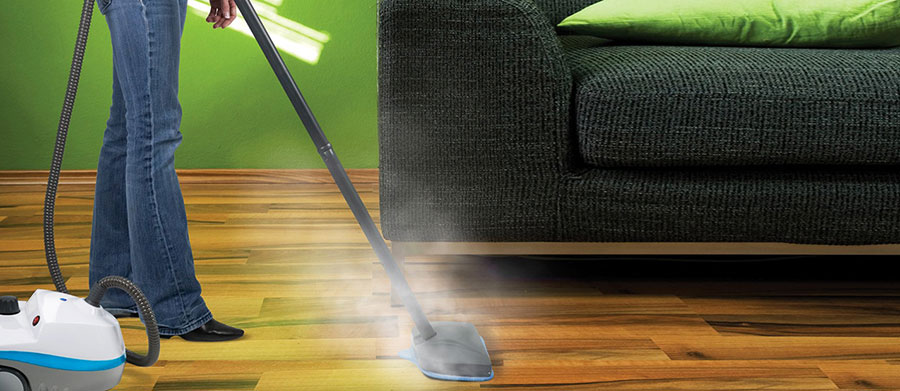
Vacuum cleaners with a steam generator are intended for cleaning furniture, carpets and other fabric surfaces. The steam flow effectively knocks out impurities from the surface and from the structure of the material.
Advantages
-
Effective in cleaning furniture, carpets, curtains and other materials;
-
Disinfecting effect;
-
Suitable for home 'dry cleaning' of clothes and cars;
disadvantages
-
High cost;
-
Steam vacuum cleaner is a solution for the care of upholstered furniture, carpets, etc. They are suitable for everyday cleaning and for single disinfection;
-
The vacuum cleaner does not remove all moisture;
-
The use of purified water is required;
Which vacuum cleaner to choose
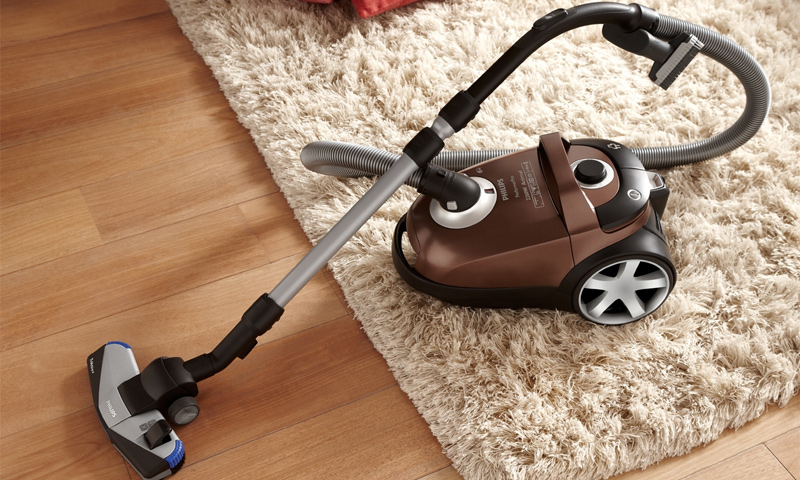
For most users, a regular vacuum cleaner will do. For high-quality cleaning of an apartment, it is worth buying two – a washing one and a manual one with a steam generator.
Upright vacuum cleaners and 2-in-1 solutions are also good solutions for everyday cleaning. They are suitable for use in small apartments as they require a minimum of storage space.
Vacuum cleaner selection parameters
When choosing a vacuum cleaner, in addition to its type and form factor, it is worth considering several other operational parameters:
-
Dust collector type (bag, container, water filter);
-
Filtration type;
-
Power consumption and suction;
-
Complete set (number and type of brushes);
-
Storage features.
Dust collector type
There are three types of dust collectors – bag, container and water filter.
Bags
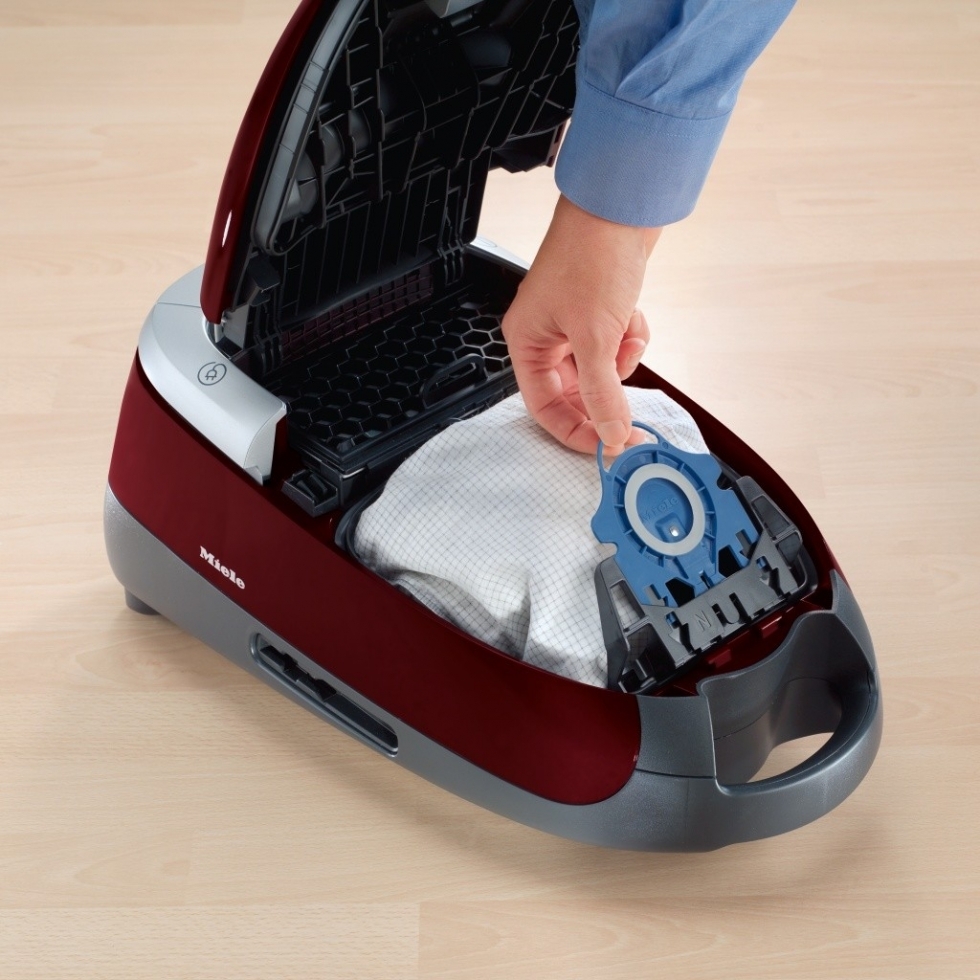
Bags in modern vacuum cleaners are rare. They are disposable and reusable.
Advantages
- The lowest price among vacuum cleaners (in most cases).
disadvantages
-
Difficulty in cleaning the bag (for reusable ones), due to dust you can get dirty;
-
Strong dust emissions into the air during work;
-
The suction power decreases as the bag fills;
-
It is necessary to constantly buy new bags (for disposable);
!
It is definitely not recommended to purchase a bag vacuum cleaner, since more modern models with collection containers cost about the same, but at the same time much more practical.
Containers

Containers are used in almost all modern vacuum cleaners. Garbage collection in such devices is carried out in a special container. Many container configurations are such that the suction rate is independent of the fill level.
Advantages
-
Easy to clean;
-
Less dust emission compared to bag vacuum cleaners;
-
Preservation of suction power as it fills;
disadvantages
-
The need for regular cleaning of filters;
-
Lack of compatibility (if the container breaks, you will have to buy a new vacuum cleaner).
Container vacuum cleaners are a versatile solution that is suitable for use by almost all people. Allergy sufferers are an exception.
Vacuum cleaners with water filter
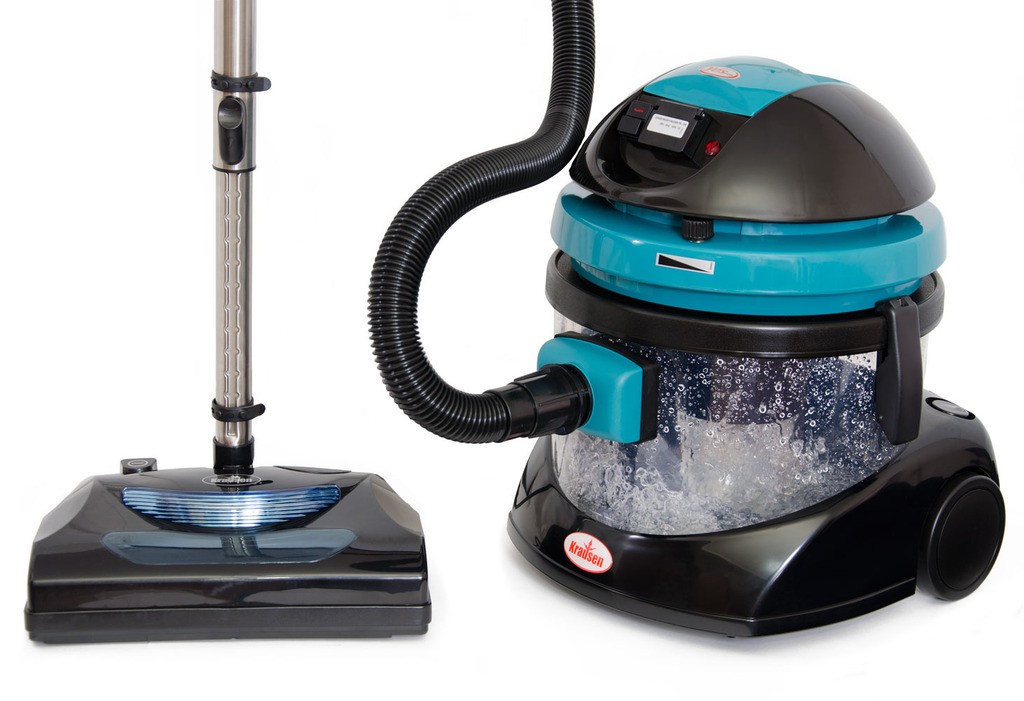
Vacuum cleaners with a water filter are the ideal solution for people with allergies or simply sensitive to dust. In them, the flow of sucked air passes through the liquid layer. Therefore, almost all the dust settles directly in the water filter, and its emission into the room is completely absent.
Advantages
-
Maximum environmental friendliness during use, no dust emission into the air;
-
Suitable for allergy sufferers, asthmatics, people with respiratory system diseases.
disadvantages
-
Slightly less suction power than container;
-
High cost;
-
Difficulty in service;
It is worth purchasing a vacuum cleaner with a water filter if there are small children, allergy sufferers and people with respiratory diseases in the house. However, with a sufficient budget and a willingness to carry out regular maintenance, it will be a great option for anyone.
Filter types

There are three types of filters used in household vacuum cleaners – coarse, fine and electrostatic microfilters. The water filter is not included in this list.
-
Coarse filters are classic sponge filters that are designed to remove large dust particles from the air blown out by a vacuum cleaner. They are installed in all such devices 'by default'.
-
Fine filters, also called HEPA filters by the name of the standard, are designed to remove fine (from 0.3 microns in diameter) dust particles from the blown air. They are additionally installed in almost all modern devices.
-
Electrostatic microfilters are designed for a more thorough cleaning of the blown air. They remove virtually all dust from the stream.
It is best to choose vacuum cleaners that are equipped with filters of all three types. Devices with this cleaning system configuration not only efficiently remove dust from the air, but also require less frequent maintenance.
Power consumption and suction
It is worth distinguishing between the useful and consumed power of the vacuum cleaner. The first is usually much smaller than the second. There is no direct relationship, but in most cases vacuum cleaners with a power consumption of 2-3 kW have a useful power (suction) of the order of 250-350 W.
-
A vacuum cleaner with a useful power of 250-350 W (or, accordingly, consumed 2-3 kW) is quite enough for cleaning the apartment.
-
For a large home, as well as cleaning densely knitted carpets, removing dust from upholstered furniture, etc. a more powerful vacuum cleaner is required – from 3 to 4 kW (suction power from 350 W).
Equipment
Various types of brushes can be supplied with the vacuum cleaner.
-
A regular brush is designed for cleaning hard floors – laminate, linoleum, etc. It is ineffective in cleaning carpet and upholstered furniture.
-
The crevice brush has a thin mouth, the cross section of which is usually smaller than the pipe diameter, and is designed to remove dust from narrow spaces between furniture or individual blocks of upholstered furniture.
-
The turbo brush is similar to a conventional brush, but it is equipped with a movable cleaning turbine. Rotating, it knocks out dust and larger dirt from the surface of carpet and similar floor coverings, as well as upholstered furniture. It is similarly effective in cleaning laminate, linoleum, etc.
-
The oval brush is similar to a regular brush, but it has no sharp corners, so it does not scratch the bottom of the furniture.
-
The round brush is equipped with bristles, making it suitable for cleaning upholstered furniture and carpets, as well as similar fabrics.
-
A natural bristle brush is similar to a round one. The material from which it is made has zero electrostatic potential. Therefore, dust does not adhere to the bristles. This brush is suitable for very thorough cleaning, as well as for use in apartments where people with allergies live.
-
In terms of performance, the electric brush is similar to a turbo brush, but it does not lose suction power and is therefore suitable for very thorough cleaning.
Storage features
Conventional vacuum cleaners take up a lot of space and therefore require separate storage space. To save space, you can store them disassembled – but then you have to collect them every time before use.
Upright and 2-in-1 vacuum cleaners take up slightly less storage space and are therefore suitable for use in small apartments.
Handheld vacuum cleaners can be stored simply on the shelf in the closet. And robotic vacuum cleaners are stored on a special docking station, which should stand on the floor and be constantly connected to the outlet.
How much does a vacuum cleaner cost
The cost of a vacuum cleaner directly depends on its power, functionality and even type.
The price for conventional models starts from 1-2 thousand rubles, but most are in the price range of 4-10 thousand rubles. Washing vacuum cleaners are more expensive – about 4-5 thousand rubles for models for household use. Upright vacuum cleaners are in a similar price range.
Vacuum cleaners '2 in 1' and robotic vacuum cleaners are the most expensive – most models are in the price range of 25-40 thousand rubles.
The manufacturer is also important. For example, for ordinary vacuum cleaners from Dyson, the normal price is from 30 thousand rubles.
The best manufacturers of vacuum cleaners – which company to choose
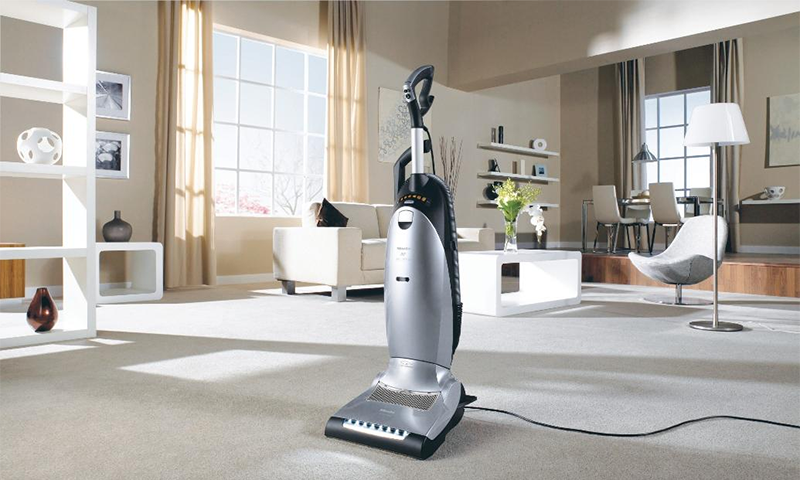
Most recommended vacuum cleaner manufacturers:
-
Hyundai, LG – Asian manufacturers that produce budget vacuum cleaners. The only drawback of such devices is that the operating period is no more than 5-6 years;
-
Dyson, Thomas, Bosch (middle or top-end models) – European manufacturers that produce powerful, but at the same time quite expensive vacuum cleaners;
-
Rainbow is the most famous American manufacturer. Models are distinguished by a long operating period;
-
iRobot is the most famous manufacturer of robotic vacuum cleaners.
Attention! This material is the subjective opinion of the authors of the project and is not a purchase guide.

